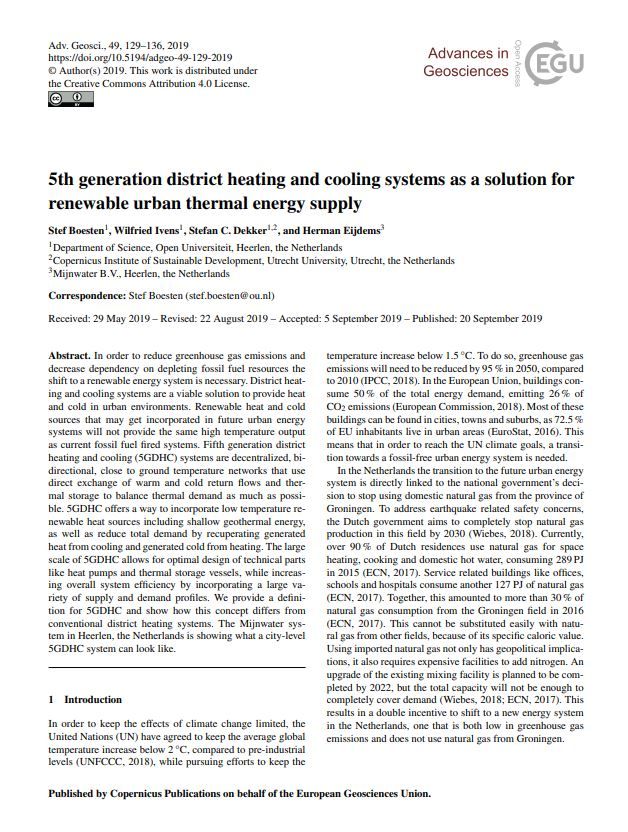[Publication] 5th generation district heating and cooling systems as a solution for renewable urban thermal energy supply
Create a subpage- Alice Dupuy
- /
- the 21-10-2019
- / 1420
Discover this new paper on 5th generation district heating and cooling (5GDHC) and how this concept differs from conventional district heating systems. Authors : Stef Boesten, Wilfried Ivens, Stefan C. Dekker, and Herman Eijdems.
Abstract : In order to reduce greenhouse gas emissions and decrease dependency on depleting fossil fuel resources the shift to a renewable energy system is necessary. District heating and cooling systems are a viable solution to provide heat and cold in urban environments. Renewable heat and cold sources that may get incorporated in future urban energy systems will not provide the same high temperature output as current fossil fuel fired systems. Fifth generation district heating and cooling (5GDHC) systems are decentralized, bidirectional, close to ground temperature networks that use direct exchange of warm and cold return flows and thermal storage to balance thermal demand as much as possible. 5GDHC offers a way to incorporate low temperature renewable heat sources including shallow geothermal energy, as well as reduce total demand by recuperating generated heat from cooling and generated cold from heating. The large scale of 5GDHC allows for optimal design of technical parts like heat pumps and thermal storage vessels, while increasing overall system efficiency by incorporating a large variety of supply and demand profiles. We provide a definition for 5GDHC and show how this concept differs from conventional district heating systems. The Mijnwater system in Heerlen, the Netherlands is showing what a city-level 5GDHC system can look like.
>> Read the full paper here <<
